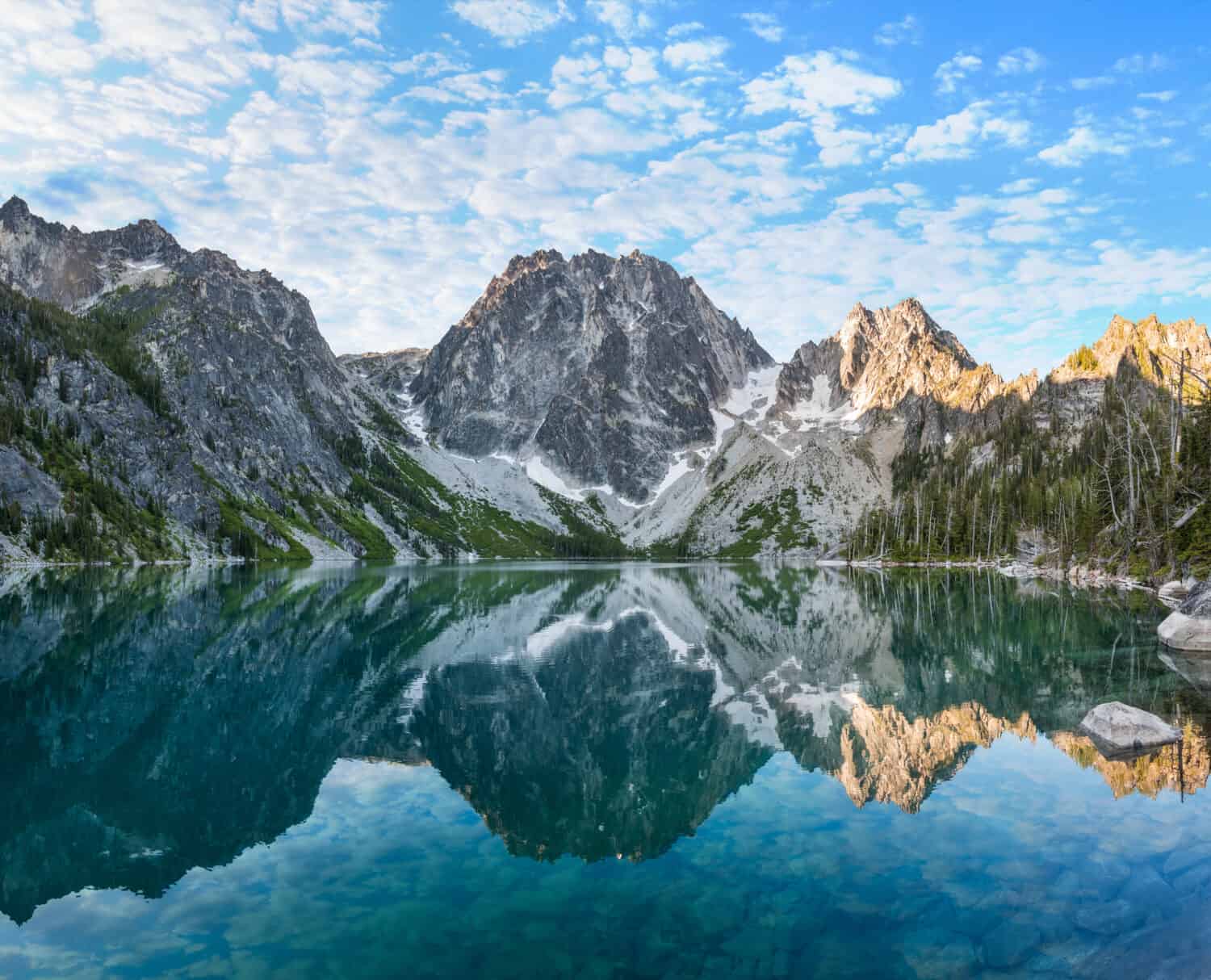Welcome to our comprehensive guide on Washington‘s planting zones and essential tips for keeping your flowers, shrubs, and trees thriving. Whether you’re a seasoned gardener or just starting out, this article will provide valuable insights to ensure successful plant growth in the beautiful state of Washington.
What is a USDA Hardiness Zone?

USDA Hardiness zone map of Washington State
©https://pdi.scinet.usda.gov/phzm/vm/WA300.jpg – Original / License
A USDA Hardiness Zone is a geographic region. Scientists at the United States Department of Agriculture (USDA) first created the system. The Zone Map helps residents and farmers understand which plants will thrive in their climate. The zones are based on the average annual minimum temperature. The USDA divides the regions into 10-degree Fahrenheit zones.
This system is to support gardeners, horticulturists, and growers in determining what plants they can plant in their gardens and how to care for them. You can use the Zones to ensure you are choosing the correct plants for your garden. This system saves a lot of time and money.
Washington’s Planting Zones — Hardiness
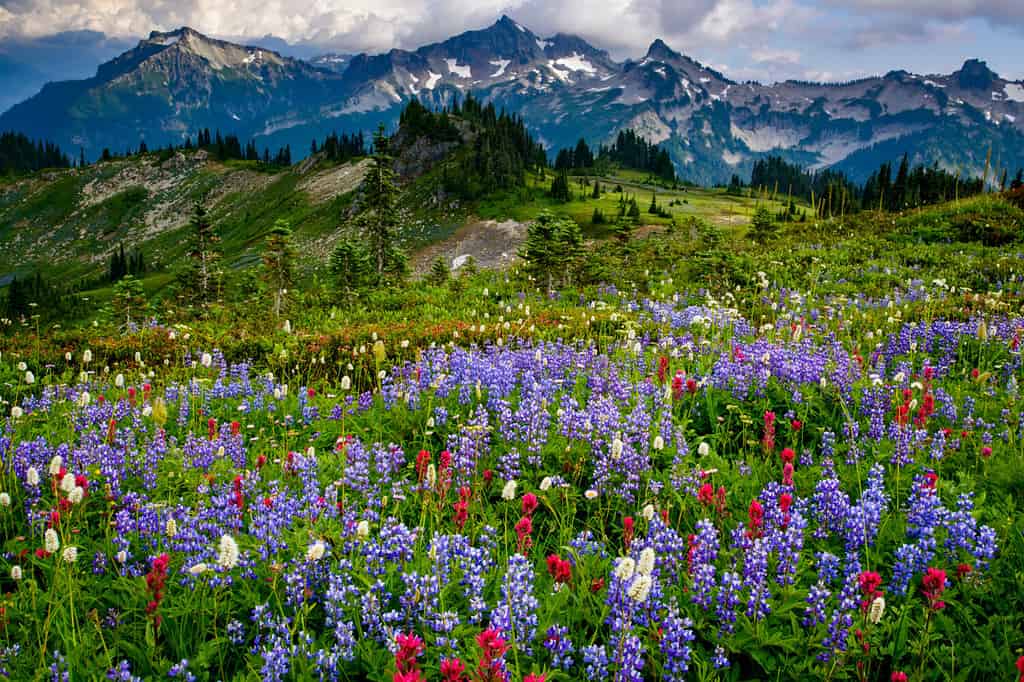
The state of Washington has a wide range of planting zones: from 4a to 9a!
©Danita Delimont/Shutterstock.com
Washington State has diverse regions, ranging from Zone 4a all the way to Zone 9a. The western area of Washington has the warmest winters, with temperatures ranging from 0-25°F, and is in Zones 7a to 9a. The area along the Canadian border in the north is colder, with winter temperatures ranging from -10 to -30°F. This region is in zones 4a to 5b. The central, southern, and eastern areas of Washington are in Zones 6a and 6b, with winter temperatures between 0 to -10°F.
Washington’s Planting Zones — Heat Index
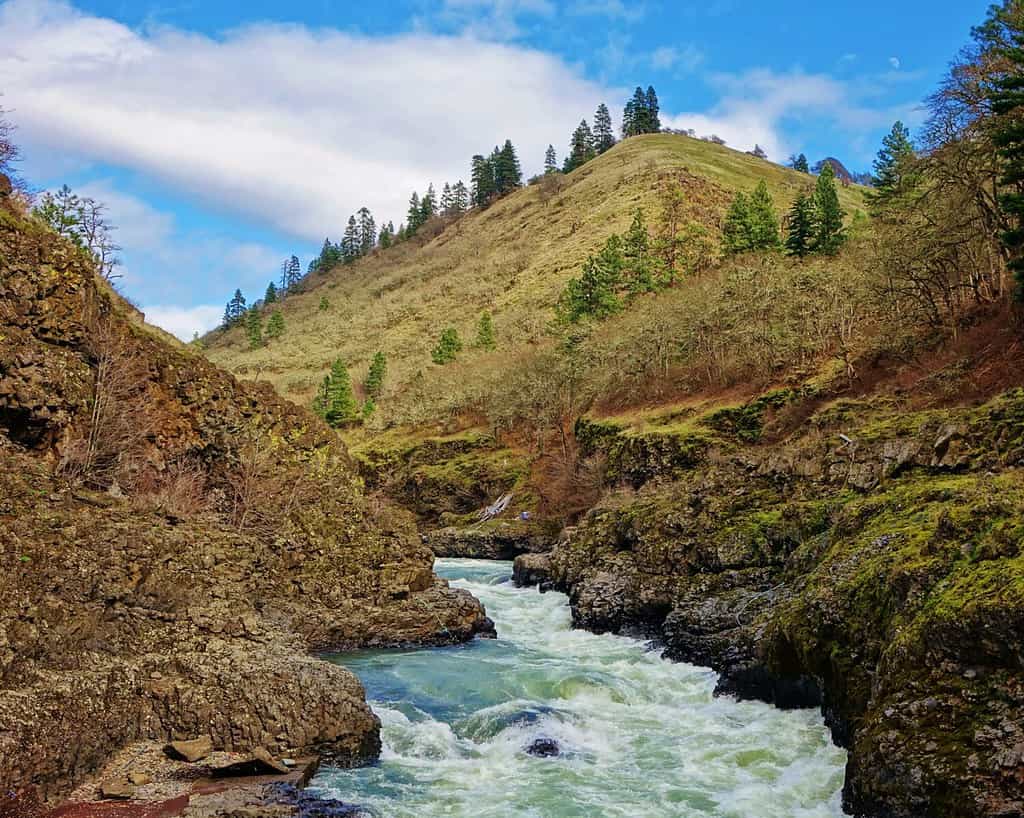
The eastern side of Washington gets significantly less rainfall than the western side.
©Dan Lewis/Shutterstock.com
Summertime in Washington State brings plenty of sunshine and warm days, but the temperatures can vary greatly depending on which side of the state you’re on. On the western side, the heat index can be significantly lower in the summertime due to the proximity to the Pacific Ocean, while the eastern side of the state tends to experience higher temperatures.
The eastern side of Washington State typically experiences higher temperatures, with temperatures reaching upwards of 90-95 degrees in the hottest months of the year. The humidity levels tend to be lower as well in the more arid eastern side of Washington. The western side of the state is slightly cooler, with temperatures ranging from the low 80s to the high 70s.
The difference in temperatures between the two sides is due to the fact that the western side of the state is closer to the Pacific Ocean, which helps to keep the temperatures moderate. The eastern side of the state is further inland and typically experiences more extreme temperatures.
Washington’s Planting Zones — Rainfall
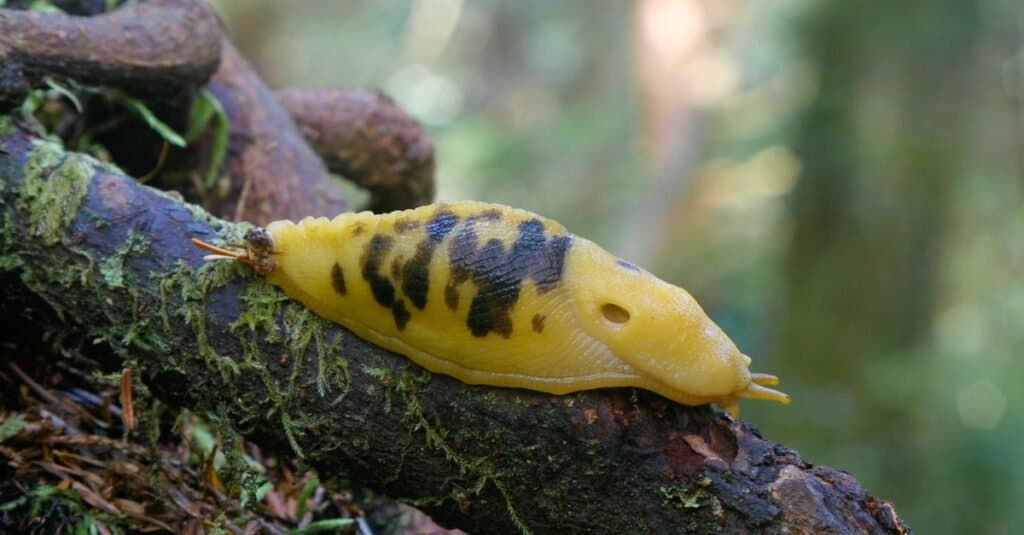
Certain creatures, like this banana slug, are big fans of the consistent rainfall in western Washington.
©Steffen Foerster/Shutterstock.com
In Washington, the amount of rainfall annually varies from 32 to 45 inches, depending on the location. Areas near the Canadian border and Seattle receive roughly 32-35 inches, while Centralia experiences 45 inches. The central part of the state is a combination of continental and coastal weather, resulting in 7-9 inches of rainfall per year. Spokane, which is the easternmost part of the state, receives 15-30 inches of precipitation annually.
Rainfall is a major factor when it comes to gardening. Knowing how much rainfall is expected annually is essential for selecting plants that will thrive in a particular environment. Too little rainfall can limit the types of plants that can survive in the area, while too much can prevent certain plants from flourishing.
Types of Plants That Thrive in Washington’s Planting Zones
Because of its wide range of planting zones, Washington gardeners have hundreds of plants to choose from. Here are a few of our favorites!
Trees

Douglas fir trees thrive in Washington’s planting zones.
©Marinodenisenko/Shutterstock.com
- Western Red Cedar (Thuja plicata): Care Requirements: prefers moist, well-drained soil, full sun to partial shade. Hardiness Zones: 5-7
- Douglas Fir (Pseudotsuga menziesii): Care Requirements: prefers moist, well-drained soil, full sun to partial shade. Hardiness Zones: 4-7
- Western Hemlock (Tsuga heterophylla): Care Requirements: prefers moist, well-drained soil, full sun to partial shade. Hardiness Zones: 5-7
- Grand Fir (Abies grandis): Care Requirements: prefers moist, well-drained soil, full sun to partial shade. Hardiness Zones: 5-7
- Pacific Silver Fir (Abies amabilis): Care Requirements: prefers moist, well-drained soil, full sun to partial shade. Hardiness Zones: 4-7
Shrubs
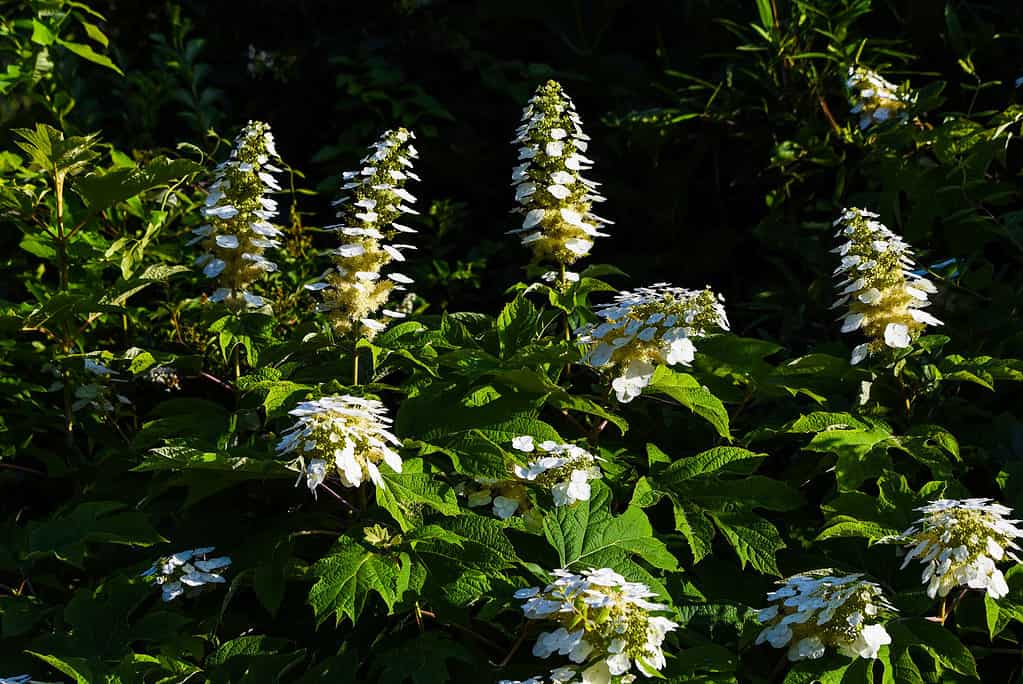
The oakleaf hydrangea is the same thing as the oak-leaved hydrangea.
©iStock.com/undefined undefined
- Pacific Rhododendron (Rhododendron macrophyllum): Care Requirements: Prefers moist, acidic soil and partial shade. Hardiness Zones: 5-9
- Oceanspray (Holodiscus discolor): Care Requirements: Needs full sun and moist, well-drained soil. Hardiness Zones: 4-9
- Red Osier Dogwood (Cornus stolonifera): Care Requirements: Needs moist soil and full sun or partial shade. Hardiness Zones: 2-7
- Salal (Gaultheria shallon): Care Requirements: Needs moist soil and partial shade or full sun. Hardiness Zones: 6-9
- Oakleaf Hydrangea (Hydrangea quercifolia): Care Requirements: Needs well-drained, acidic soil and full sun or partial shade. Hardiness Zones: 5-9
Flowers
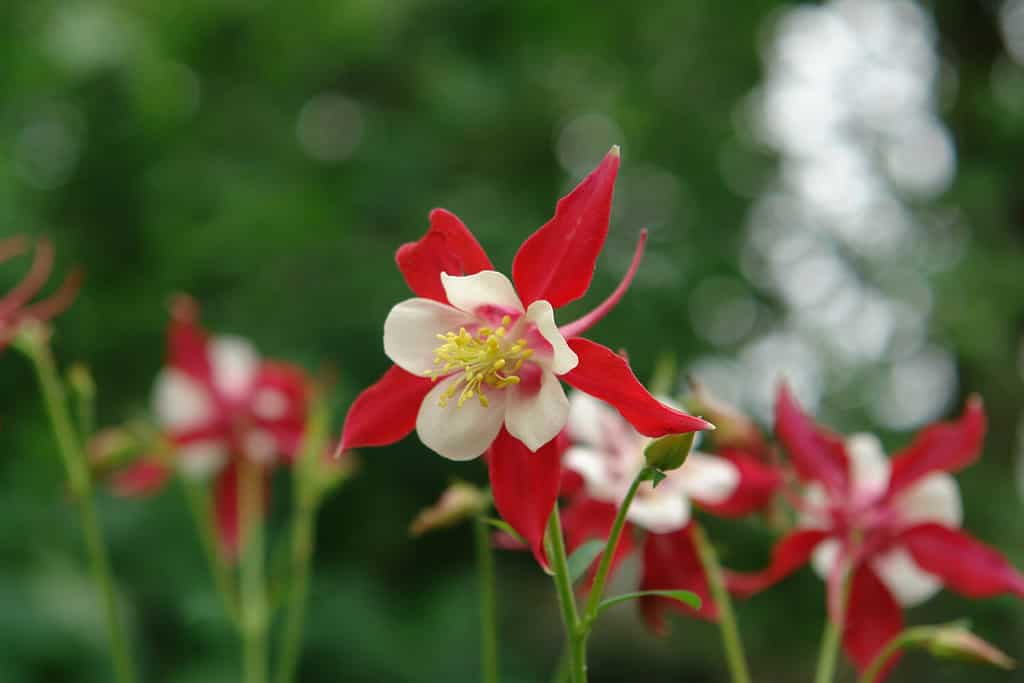
Columbines are hardy in all of Washington’s planting zones. They thrive from Zones 3-8.
©prambuwesas/Shutterstock.com
- Lavender (Lavandula angustifolia): Care Requirements: Plant in well-drained soil in full sun. Hardiness Zones: 4-9
- Columbine (Aquilegia) Care: Plant in well-drained soil in partial shade. Hardiness Zones: 3-8
- Fireweed (Chamaenerion) Care: Plant in moist soil in full sun. Hardiness Zones: 3-7
- Hops (Humulus lupulus) Care: Plant in moist soil in full sun. Hardiness Zones: 3-8
- Oregon Grape (Mahonia aquifolium) Care: Plant in well-drained soil in partial shade. Hardiness Zones: 5-7
7 Keys To Keeping Flowers, Shrubs, and Trees Alive
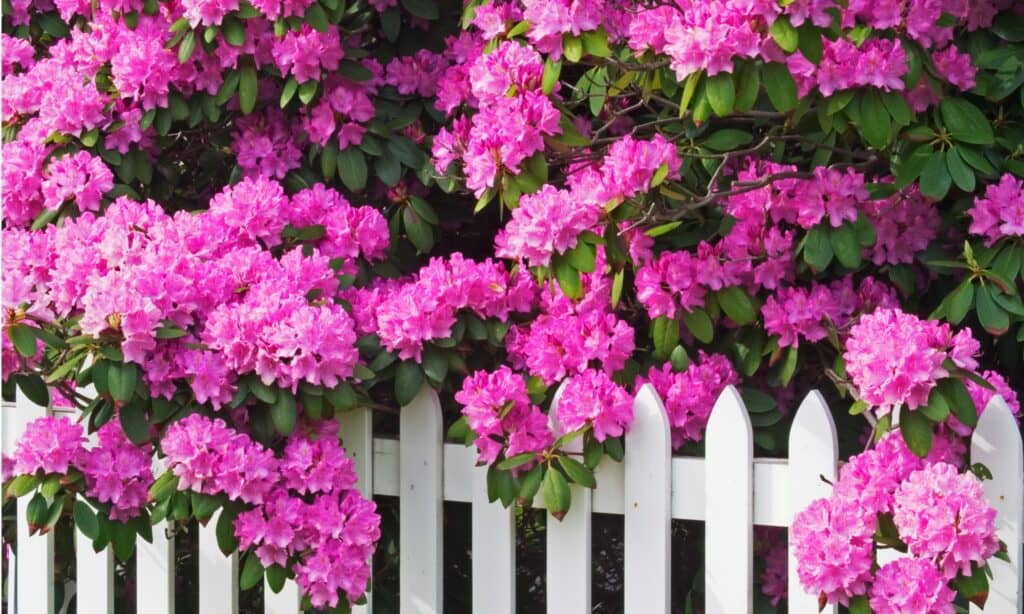
Rhododendrons are great privacy shrubs.
©iStock.com/dndavis
1. Keep an Eye on the Weather
Weather is an important factor when it comes to keeping flowers, shrubs, and trees alive in Washington. Pay attention to the forecast and be prepared to take measures. You may need to cover plants with a tarp or bring them inside when extreme temperatures or storms are forecast. Additionally, don’t forget to check for frost warnings and ensure that newly planted trees are well-protected against potential cold snaps.
2. Provide Adequate Water
Water your flowers, shrubs, and trees regularly, especially during the hot summer months. If you have a sprinkler system, make sure to check it to ensure that it is functioning properly. Otherwise, use a garden hose or watering can to give plants the water they need to thrive.
3. Utilize Mulch and Compost
Adding mulch and compost to flower, shrub, and tree beds can help protect the soil from erosion, keep moisture in, and add much-needed nutrients. If you don’t have access to compost, you can use store-bought mulch or composted manure instead.
4. Trim and Prune Regularly
Pruning and trimming flowers, shrubs, and trees can help them maintain their shape and encourage healthy growth. Make sure to use sharp pruning shears and trimming tools, and remove any dead or diseased branches.
5. Control for Pests
Pests can cause major damage to new plants, so be sure to keep an eye out for signs of infestation. If you see signs of pests, take steps to control them as soon as possible. This could involve purchasing or making an organic insecticide or introducing natural predators.
6. Use Native Plants
Using native plants has many benefits. They are adapted to the local climate, meaning they require less water, are more resistant to pests and diseases, and have a better chance of surviving in harsh weather. Native plants also help to conserve biodiversity, providing homes and food sources for native wildlife. They can also help to reduce erosion, improve water quality, and create beautiful, natural landscapes. By choosing native plants, we can help to protect and preserve our local environment.
7. Choose The Right Plant for the Zone
Planting the wrong type in the wrong climate can cause poor growth, disease, and ultimately death. To ensure the health and success of plants, it is important to know the hardiness zones and select the plants that are best suited for the specific area. Plants that are well-suited to the climate and soil are more likely to thrive and be beautiful additions to any landscape.
Thank you for reading! Have some feedback for us? Contact the AZ Animals editorial team.

